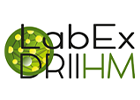Towards freshwater plant diversity surveys with eDNA barcoding and metabarcoding
Providing reliable, cost-effective data on species distribution is critical to ensuring biodiversity conservation. However, many species may go unrecorded by conventional surveys, especially in aquatic environments. Environmental DNA (eDNA) barcoding and metabarcoding are alternative approaches that could complete biodiversity estimates based on species observations. While eDNA surveys are being standardized for some animal groups (e.g., fish and amphibians), research on eDNA approaches for freshwater plant communities is just starting to bear fruit. Here, we synthesized the 22 studies that used eDNA barcoding and metabarcoding to survey plant biodiversity in freshwater systems. We present evidence that contemporary aquatic plants (macrophytes) and terrestrial plants can be detected in water and surficial sediment eDNA from lakes and rivers. The phenology (e.g., senescence) of the target taxa strongly influences species detection. The main application of eDNA barcoding targets the monitoring of invasive macrophytes, and barcoding assays are available for 14 taxa. The metabarcoding approach shows a range of applications: the detection of rare macrophytes, catchment-scale floristic inventories, and sediment fingerprinting. Barcodes on the plastid genome (cpDNA) are preferred for both approaches: matK and trnH-psbA for barcoding, trnL, and rbcL for metabarcoding. The intergenic transcribed spacer 1 (ITS1) from the nuclear ribosomal DNA (nrDNA) was used for designing eDNA barcoding assays on five invasive macrophytes. In contrast, only three metabarcoding studies used the ITS1 or IST2 with newly designed primers. However, metabarcoding applications should routinely use a multi-locus approach, combining cpDNA and nrDNA barcodes. Barcode combinations and existing primers need further testing on eDNA samples. We recommend using local barcode reference databases (BRDs), ideally self-made, to circumvent taxonomic gaps and heterogeneous sequences in public BRDs. Finally, new technologies and developments like droplet digital PCR and hybridisation capture offer new perspectives for eDNA-based biodiversity monitoring approaches.




